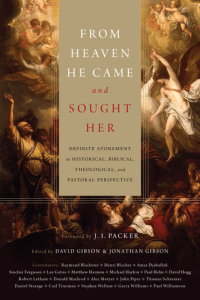Three Features of Typology
 Wednesday, May 7, 2014 at 7:00PM
Wednesday, May 7, 2014 at 7:00PM 
I’m posting this, first, because it’s good, and second, because I want to link to it from the theological term page for typology. It’s taken from Stephen J. Wellum’s chapter on The New Covenant Work of Christ in From Heaven He Came and Sought Her: Definite Atonement in Historical, Biblical, Theological, and Pastoral Perspective. This was originally one longish paragraph which I’ve reformatted as an ordered list.
- [T]ypology is symbolism rooted in historical-textual realities. As such, it involves an organic relation between “persons, events, and institutions” (i.e., the type) in one epoch of redemptive history and their counterparts in later epochs (i.e., the antitype).
- [T]ypology is predictive and thus divinely given and intended. God intended for the “type” to point beyond itself to its fulfillment of “antitype.” Typologies are not mere analogies but are tied to recurrent patterns pointing forward to a culminating repetition of a pattern that ultimately finds its fulfillment in Christ. By these patterns God is providing the interpretive-conceptual categories to instruct us about the work of Christ, and trying to understand Christ’s work apart from them will inevitably lead to unbiblical conclusions.
- [A]s one moves from type to antitype, the fulfillment in Christ always involves an a fortiori escalation. For example, as one moves from Adam, David, or the OT priests to Christ, it always leads to greater reality. That is why our Lord is presented in the NT not merely as another Adam, David, or priest, but the Last Adam, David’s greater Son, and our Great High Priest, who transcends and fulfills the early type in almost every way imaginable.
The chapter this comes from is the strongest chapter so far—and I’m through 19 of 23—in a book of mostly strong chapters. When Christ’s priestly work is viewed through a covenantal lens, the atonement has to be definite rather than universal.
Previously posted quotes from this book:


Reader Comments